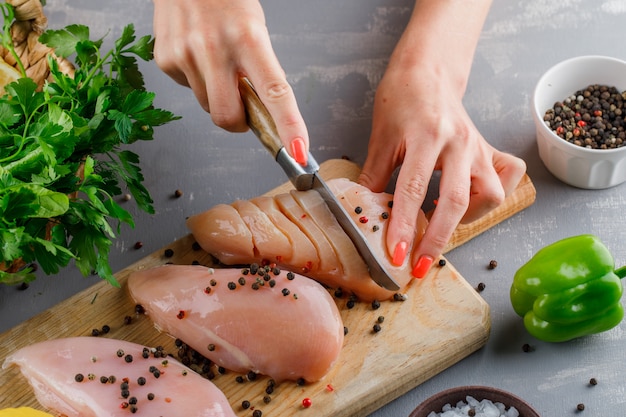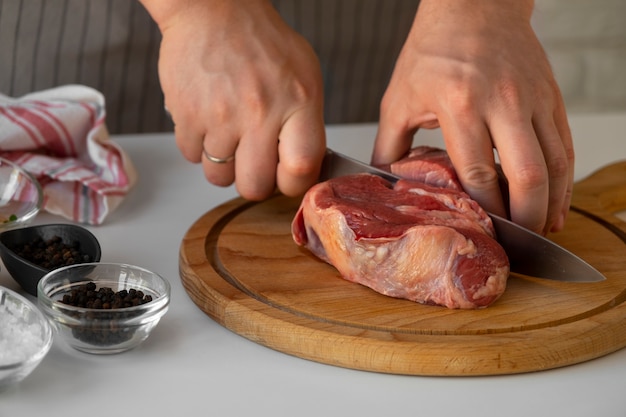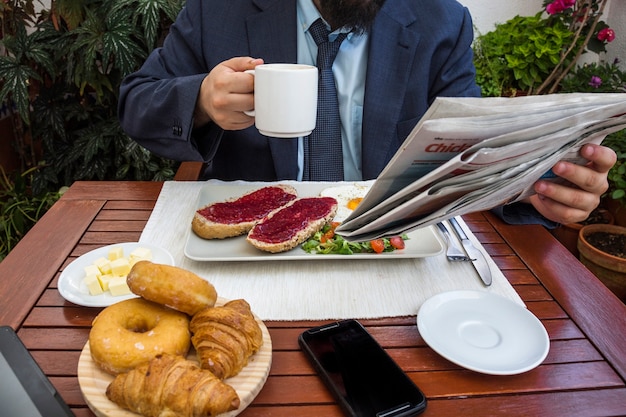(Part 1) Choosing the Right Ham

types of ham: Knowing Your Options
The first step is choosing the right ham for your culinary adventure. There's a whole world of ham varieties out there, each with its own unique flavour and characteristics. Let's break down the key players:
- cured ham: This is the most common type, with a salty flavour and a distinctive pink hue. It's cured using salt and other seasonings, and you'll find it both pre-cooked and raw. pre-cooked ham is ready to eat, while raw ham requires some cooking time.
- smoked ham: The smoky aroma and darker colour of smoked ham come from its wood-chip smoking process. It's typically pre-cooked and perfect for a smoky flavour boost.
- spiral-sliced ham: This ham is already carved into spiral slices, making it incredibly easy to serve. It's usually pre-cooked and available in both cured and smoked varieties.
Size Matters: Feeding the Crowd
The size of your ham will depend on your guest list. A whole ham can be a massive undertaking, especially if you're cooking for a small family. For a smaller gathering, consider a half ham or a pre-sliced variety. I once attempted to cook a whole ham for just my family of four, and we ended up eating ham for a week! Let's learn from my mistakes, shall we? Plan ahead, consider your guests, and choose the right size for your occasion.
(Part 2) Preparing Your Ham

Getting Ready for the Oven: Prepping Your Ham
Now that you've chosen your ham, it's time to prepare it for cooking. If you're working with a pre-cooked ham, simply remove the packaging and rinse it gently. But if you're using a raw ham, there's a little more prep involved.
For raw hams, you'll need to soak it in cold water for several hours. This helps to remove excess salt and bring the ham to room temperature before cooking. This soaking process is crucial for even cooking and a more flavorful end result. I recommend soaking your raw ham for at least 4 hours, but you can go up to 8 hours for a really thorough soak.
The Glaze Game: Enhancing Your Ham's Flavour
Let's talk about glazes! A good glaze can elevate your ham from ordinary to extraordinary. The possibilities are endless, from classic honey mustard to more adventurous pineapple or maple syrup combinations.
You can use a store-bought glaze, or unleash your inner chef and create your own. My personal favourite is a simple honey mustard glaze, but I've also been known to experiment with a tangy brown sugar glaze and even a sweet and spicy pineapple glaze with a hint of chili. The choice is yours, but don't underestimate the power of a well-crafted glaze!
(Part 3) Cooking Methods and Temperatures

Oven Baking: The Classic Approach
Oven baking is the traditional method for cooking ham, and it's incredibly versatile. It allows for precise temperature control and creates a beautifully golden-brown exterior.
Temperature and Time: Finding the Sweet Spot
The general rule of thumb for oven-baked ham is to cook it at 325°F (165°C) for about 15 minutes per pound. However, this is just a starting point, and the actual cooking time can vary depending on the size and type of ham.
| Ham Type | Cooking Time (per pound) |
|---|---|
| Whole Ham (Raw) | 20-25 minutes |
| Half Ham (Raw) | 25-30 minutes |
| Pre-Cooked Ham (Cured or Smoked) | 15-20 minutes |
To ensure your ham is cooked through, use a meat thermometer. Insert it into the thickest part of the ham (avoiding any bone), and make sure it registers 145°F (63°C) for a safe internal temperature. This is crucial, especially for raw ham, as it guarantees that the ham is cooked through and safe to eat.
Glazing and Finishing: Adding That Final Touch
During the last 30 minutes of cooking, brush your ham with your chosen glaze. This will help it caramelize, creating a beautiful, glossy finish and adding an extra layer of flavour. For an extra layer of richness, I like to baste my ham every 10 minutes with a mixture of glaze and pan juices. It's a little extra effort, but the results are worth it!
slow cooker ham: Hands-Off Deliciousness
If you're looking for a hands-off approach, the slow cooker is your best friend. It's especially great for pre-cooked ham, as it re-heats it evenly and adds moisture.
Slow Cooker Temperature and Time: Letting the Ham Simmer
For slow-cooked ham, you'll typically cook it on low for 4-6 hours. The exact time will depend on the size of the ham and your desired level of tenderness. I tend to opt for the longer cook time, as it allows the ham to become incredibly tender and succulent.
Glazing and Finishing: Slow-Cooked Perfection
Add your glaze to the slow cooker during the last hour of cooking. This allows the glaze to meld with the ham, creating a beautiful, sticky coating. You can also add a cup of liquid to the slow cooker, like apple juice or pineapple juice, for an extra flavour boost. I've found that a cup of apple juice with a splash of bourbon adds a wonderful depth of flavour to my slow-cooked ham.
Grilling Ham: Smoky Flavour and a Crispy Crust
For a smoky flavour and a crispy outer crust, grilling your ham is a great option. Just make sure to use a pre-cooked ham for this method, as raw ham can be challenging to grill evenly.
Grilling Temperature and Time: Grilling Perfection
Preheat your grill to medium heat and cook the ham for about 15-20 minutes per pound. Rotate the ham every 10 minutes for even cooking. This is also the perfect time to brush on your glaze for that delicious caramelization. Just keep an eye on it, as glaze can burn quickly on the grill!
(Part 4) Serving Your Ham
Carving Up the Feast: A Masterful Slice
Once your ham is cooked, let it rest for 10-15 minutes before carving. This allows the juices to redistribute throughout the ham, resulting in a more tender and flavorful slice. This resting period is particularly important for oven-baked ham, as it helps to lock in the moisture and prevent it from drying out during carving.
If you're using a pre-cooked ham that has been pre-sliced, you can skip this step, but do let it rest for a few minutes to warm up.
A Festive Spread: From Classic to Casual
Now it's time to enjoy your culinary masterpiece! Ham is incredibly versatile, it can be served as the star of the show, or as part of a larger buffet.
- Classic Ham Feast: Serve your ham with mashed potatoes, gravy, green beans, and a side of your favourite fruit salad.
- Summer Ham Picnic: Pack up your ham with potato salad, coleslaw, and some crusty bread.
- ham and cheese sandwiches: Make sandwiches with your leftover ham, cheese, and mustard for a satisfying snack or lunch.
- Ham Hash: Dice your leftover ham and add it to a pan with potatoes, onions, and peppers.
No matter how you choose to serve it, a well-cooked ham is guaranteed to be a hit. So, go forth and conquer the world of ham cooking!
(Part 5) FAQs
1. How do I know if my ham is fully cooked?
The best way to check is by using a meat thermometer. Insert it into the thickest part of the ham (avoiding any bone) and make sure it registers 145°F (63°C) for a pre-cooked ham, and 160°F (71°C) for a raw ham. If you don't have a thermometer, you can check for doneness by making a small cut in the ham. The juices should run clear and the ham should be firm to the touch.
2. Can I cook my ham on a lower temperature for a longer time?
You certainly can. This is a good idea if you want to ensure a really tender ham. Just reduce the oven temperature to 300°F (150°C) and increase the cooking time accordingly. But make sure to check the temperature regularly with a meat thermometer.
3. Can I freeze leftover ham?
Absolutely! You can freeze cooked ham for up to 3 months. Just wrap it tightly in plastic wrap or foil, then place it in a freezer bag. To reheat, defrost it in the refrigerator overnight, then reheat it in the oven or slow cooker. I find that reheating ham in the slow cooker helps to keep it moist and flavorful.
4. Why is my ham dry?
Overcooking is the most common culprit for dry ham. It can also happen if you don't use enough liquid in the cooking process. For a juicier ham, try adding a cup or two of apple juice, pineapple juice, or water to the bottom of the roasting pan. You can also baste the ham regularly during cooking. This will help to keep the ham moist and prevent it from drying out.
5. What should I do if my ham is too salty?
Pre-cooked hams can sometimes be quite salty. If this happens, you can try to balance the flavour by serving your ham with something sweet, such as a fruity chutney or a honey-based glaze. You can also rinse the ham before cooking, to help remove some of the salt.
(Part 6) From My Kitchen to Yours
I hope this guide has equipped you with the knowledge and confidence to cook the perfect ham. Remember, the key to a truly delicious ham is to experiment and have fun!
So, gather your ingredients, put on some upbeat music, and let the ham-cooking adventure begin! If you have any questions or want to share your own tips and tricks, feel free to leave a comment below. Happy cooking!
Everyone is watching

Prime Rib Roast Cooking Time Chart: Per Pound Guide
Cooking TipsPrime rib roast. Just the name conjures images of lavish dinners, crackling fires, and hearty laughter. It’s ...

How Long to Bake Potatoes in the Oven (Perfect Every Time)
Cooking TipsBaked potatoes are a staple in my kitchen. They're incredibly versatile, delicious, and surprisingly easy to m...

Perfect Rice Every Time: The Ultimate Guide to Cooking Rice
Cooking TipsAs a self-proclaimed foodie, I've always been a bit obsessed with rice. It's the foundation of countless cuisi...

The Ultimate Guide to Cooking Asparagus: Tips, Techniques, and Recipes
Cooking TipsAsparagus. The mere mention of this spring delicacy conjures up images of vibrant green spears, crisp and burs...

Ultimate Guide to Cooking the Perfect Thanksgiving Turkey
Cooking TipsThanksgiving. Just the word conjures up images of overflowing tables laden with delicious food, the scent of r...
